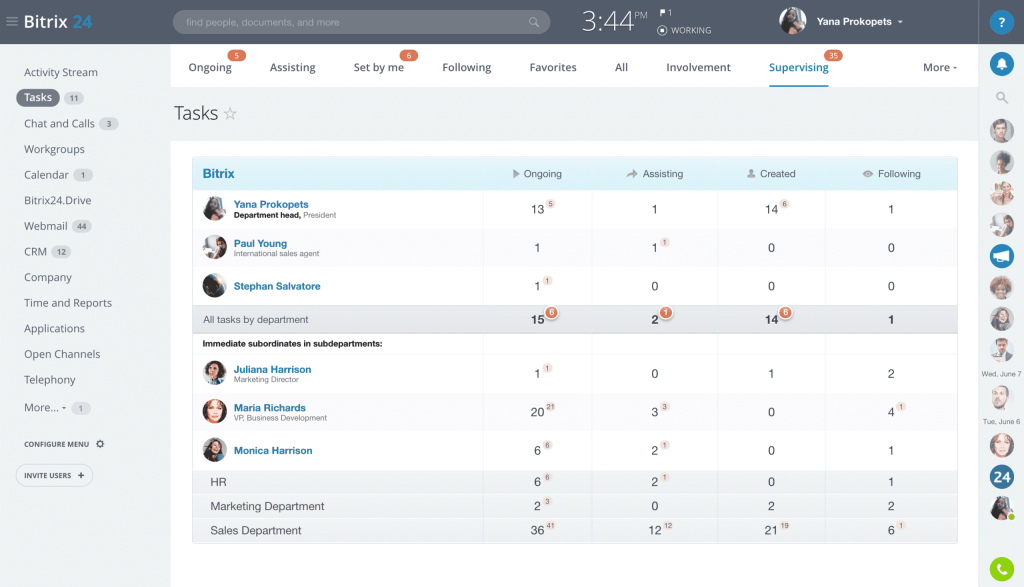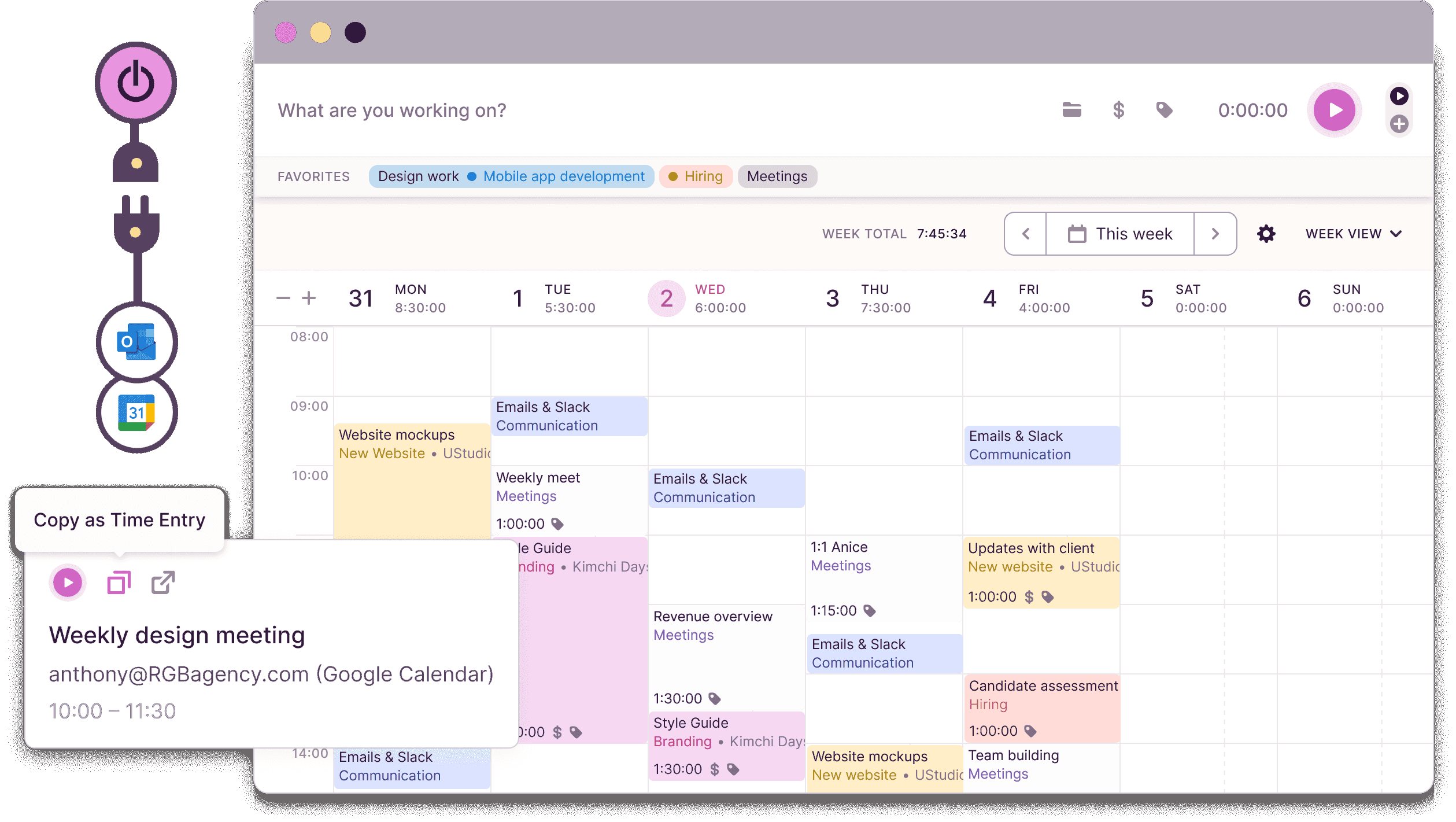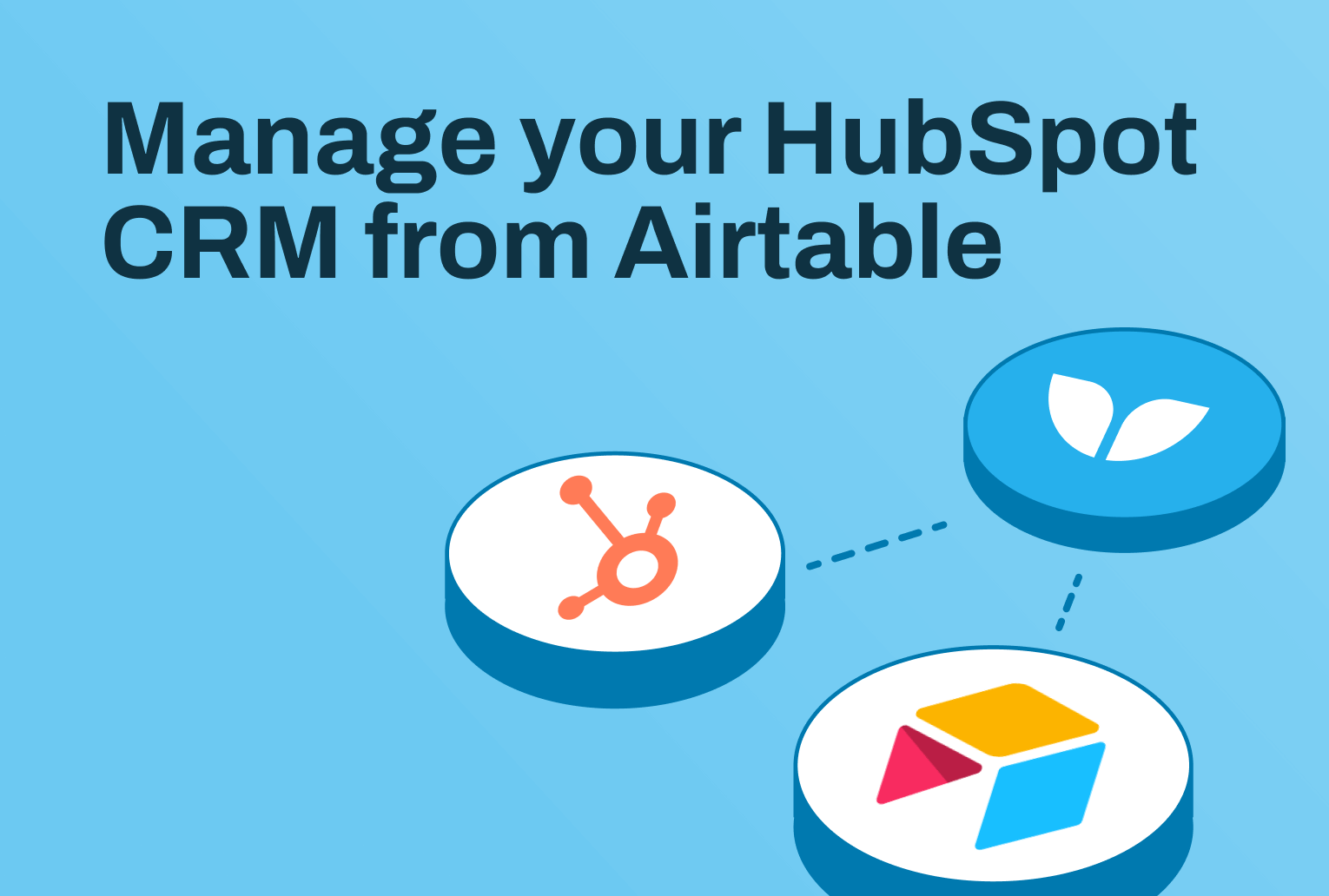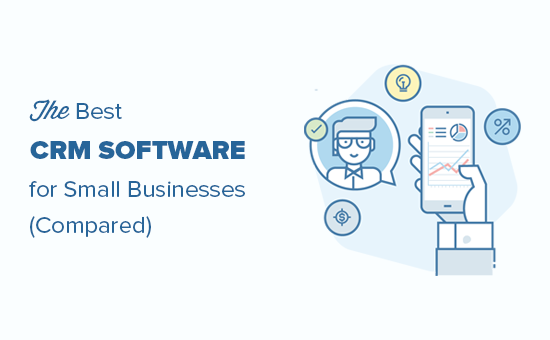Boost Your Small Business Efficiency: A Comprehensive Guide to CRM Systems

Boost Your Small Business Efficiency: A Comprehensive Guide to CRM Systems
Running a small business is like conducting an orchestra; there are countless moving parts, and each one needs to be perfectly in sync. From managing customer relationships to streamlining sales processes and everything in between, the demands can feel overwhelming. This is where a Customer Relationship Management (CRM) system swoops in, offering a lifeline of efficiency and organization. This comprehensive guide will delve into the world of CRM, specifically tailored for small businesses, exploring its benefits, functionalities, implementation strategies, and ultimately, how it can transform your business from a chaotic juggling act into a well-oiled machine.
What is CRM and Why Does Your Small Business Need It?
At its core, a CRM system is a technology that helps businesses manage and analyze customer interactions and data throughout the customer lifecycle, with the goal of improving business relationships, assisting in customer retention, and driving sales growth. It’s much more than just a contact list; it’s a central hub for all things customer-related. For a small business, this can be the difference between surviving and thriving. In the early days, you might be able to keep track of everything in your head or in a spreadsheet. However, as your customer base expands, this approach becomes increasingly difficult, time-consuming, and prone to errors. A CRM system offers a structured and scalable solution.
Think of it this way: Without a CRM, you’re likely missing out on valuable insights. You might not know which marketing campaigns are most effective, which customers are most likely to churn, or which sales reps are performing best. A CRM provides the visibility you need to make informed decisions and optimize your business strategies.
Key Benefits of CRM for Small Businesses
- Improved Customer Relationships: CRM centralizes customer data, allowing you to personalize interactions and provide better customer service. You’ll know each customer’s history, preferences, and past interactions, enabling you to tailor your approach and build stronger relationships.
- Increased Sales: By tracking leads, managing the sales pipeline, and automating sales tasks, CRM can significantly boost your sales performance. It helps you identify and nurture leads, close deals faster, and forecast sales more accurately.
- Enhanced Efficiency: Automate repetitive tasks such as data entry, email marketing, and follow-up reminders, freeing up your team to focus on more strategic activities. This leads to increased productivity and reduced operational costs.
- Better Data Management: CRM provides a centralized repository for all customer data, ensuring accuracy, consistency, and accessibility. You can easily track customer interactions, sales activities, and marketing efforts, gaining valuable insights into your business performance.
- Improved Communication & Collaboration: CRM systems allow for seamless communication and collaboration across teams. Sales, marketing, and customer service can all access the same customer information, ensuring everyone is on the same page and providing a consistent customer experience.
- Data-Driven Decision Making: CRM provides valuable data and analytics that enable you to make informed decisions about your business strategies. You can track key performance indicators (KPIs), identify trends, and measure the effectiveness of your marketing and sales efforts.
Essential Features of a CRM System for Small Businesses
The CRM landscape is vast, with options ranging from simple contact management tools to complex, feature-rich platforms. For a small business, it’s crucial to choose a system that offers the right balance of functionality and affordability. Here are some essential features to look for:
Contact Management
This is the foundation of any CRM system. It allows you to store and organize customer contact information, including names, addresses, phone numbers, email addresses, and other relevant details. Good contact management features should include the ability to segment contacts, add notes, and track interactions.
Lead Management
A CRM should help you manage your leads effectively, from initial contact to conversion. Features such as lead capture forms, lead scoring, and lead nurturing workflows are essential for identifying and qualifying potential customers. This helps you focus your sales efforts on the most promising leads.
Sales Automation
Automate repetitive sales tasks to free up your sales team’s time and improve efficiency. This can include automated email sequences, task reminders, and sales pipeline management. Automation helps ensure that no leads or opportunities fall through the cracks.
Marketing Automation
Many CRM systems also offer marketing automation capabilities. This allows you to create and manage email marketing campaigns, track website activity, and personalize customer communications. Marketing automation helps you nurture leads, drive engagement, and increase conversions.
Reporting and Analytics
Gain valuable insights into your sales and marketing performance with reporting and analytics features. Track key metrics such as sales revenue, lead conversion rates, and customer satisfaction. Use this data to identify areas for improvement and make data-driven decisions.
Integration Capabilities
Choose a CRM system that integrates with other tools you use, such as email marketing platforms, accounting software, and social media channels. Integrations streamline your workflows and ensure that data is shared seamlessly between different systems.
Mobile Access
In today’s fast-paced world, mobile access is crucial. Make sure your CRM system has a mobile app or is accessible via a mobile browser, allowing your team to access customer information and manage their tasks on the go.
Choosing the Right CRM for Your Small Business
Selecting the right CRM system can feel overwhelming, but with careful consideration of your business needs, you can find the perfect fit. Here’s a step-by-step guide to help you make the right choice:
1. Define Your Needs and Goals
Before you start evaluating CRM systems, take the time to define your specific needs and goals. What are your biggest challenges? What do you hope to achieve with a CRM? Identify the key features and functionalities that are essential for your business. Consider these questions:
- What are your current pain points in managing customer relationships?
- What are your sales and marketing goals?
- What are your budget constraints?
- What integrations do you need?
2. Research and Compare CRM Systems
Once you have a clear understanding of your needs, start researching different CRM systems. Explore options that cater specifically to small businesses. Some popular choices include:
- HubSpot CRM: Known for its user-friendliness and comprehensive free plan. Ideal for businesses seeking robust marketing and sales tools.
- Zoho CRM: Offers a wide range of features and customization options, suitable for businesses of all sizes.
- Salesforce Sales Cloud: A powerful and scalable CRM system, but can be complex for smaller businesses.
- Pipedrive: Designed with a focus on sales pipeline management and ease of use.
- Freshsales: A modern CRM with a focus on sales automation and communication.
Compare the features, pricing, and reviews of different systems to identify the best fit for your business. Pay attention to ease of use, integration capabilities, and customer support.
3. Consider Pricing and Budget
CRM systems are available at a wide range of price points, from free plans to enterprise-level subscriptions. Determine your budget and choose a system that fits your financial constraints. Consider the long-term cost, including implementation, training, and ongoing maintenance. Don’t be afraid to start with a free or low-cost plan and upgrade as your business grows.
4. Evaluate Ease of Use and User Experience
A CRM system is only effective if your team actually uses it. Choose a system that is easy to use and navigate. Look for a user-friendly interface, intuitive features, and helpful tutorials. Consider offering a free trial to your team to get their feedback before making a final decision.
5. Assess Integration Capabilities
Make sure the CRM system integrates with the other tools you use, such as email marketing platforms, accounting software, and social media channels. Integrations streamline your workflows and ensure that data is shared seamlessly between different systems. Check the available integrations before making your decision.
6. Prioritize Customer Support
When you run into issues, having reliable customer support is essential. Check the vendor’s customer support options, such as email, phone, chat, and online documentation. Read reviews to see what other users have to say about their customer support experience.
7. Request Demos and Free Trials
Before committing to a CRM system, request demos and free trials. This allows you to test the system’s features and functionality, evaluate its ease of use, and get a feel for the user experience. Involve your team in the evaluation process to get their feedback.
Implementing Your CRM System: A Step-by-Step Guide
Once you’ve chosen a CRM system, the next step is to implement it. A successful implementation requires careful planning and execution. Here’s a step-by-step guide to help you get started:
1. Plan Your Implementation
Before you start implementing your CRM system, create a detailed implementation plan. This plan should outline your goals, timelines, and responsibilities. Identify the key stakeholders and involve them in the planning process. Consider these questions:
- What data will you import into the CRM?
- Who will be responsible for data entry and maintenance?
- How will you train your team on the new system?
- What are your success metrics?
2. Clean and Import Your Data
Before importing your data into the CRM, clean it up to ensure accuracy and consistency. Remove duplicate entries, correct errors, and standardize formatting. Then, import your data into the CRM system, following the vendor’s instructions. Test the import process to ensure that all data is imported correctly.
3. Customize Your CRM
Customize your CRM system to meet your specific business needs. Configure the system’s settings, create custom fields, and set up workflows. Take advantage of the system’s customization options to tailor it to your business processes. This is where your initial planning comes into play.
4. Train Your Team
Provide comprehensive training to your team on how to use the CRM system. Offer training sessions, create user guides, and provide ongoing support. Ensure that everyone understands the system’s features and how to use them effectively. Consider ongoing training to address new features and changes.
5. Integrate with Other Tools
Integrate your CRM system with other tools you use, such as email marketing platforms, accounting software, and social media channels. This will streamline your workflows and ensure that data is shared seamlessly between different systems. Make sure the integrations are set up correctly.
6. Test and Refine
After implementing your CRM system, test it thoroughly to ensure that it’s working as expected. Identify any issues and make adjustments as needed. Gather feedback from your team and refine the system to improve its usability and effectiveness. Continuously monitor and refine your CRM to optimize its performance.
7. Monitor and Analyze Results
Track key performance indicators (KPIs) to measure the effectiveness of your CRM system. Analyze the data to identify areas for improvement and make data-driven decisions. Regularly review your CRM strategy and make adjustments as needed.
Maximizing CRM Efficiency: Best Practices
Implementing a CRM system is just the first step. To truly maximize its efficiency, you need to follow best practices and continuously optimize your processes. Here are some tips:
1. Data Accuracy and Consistency
Ensure that your data is accurate, consistent, and up-to-date. Regularly review and clean your data to remove errors and duplicates. Establish data entry guidelines and train your team on how to follow them. This is critical for generating reliable reports and making informed decisions.
2. User Adoption and Training
Encourage user adoption by providing ongoing training and support. Make sure your team understands the value of the CRM system and how to use it effectively. Offer incentives for using the system and provide regular feedback.
3. Automate Tasks and Workflows
Take advantage of the CRM system’s automation features to streamline your processes. Automate repetitive tasks, such as data entry, email marketing, and follow-up reminders. This will free up your team’s time and improve efficiency.
4. Personalize Customer Interactions
Use the CRM system to personalize your customer interactions. Tailor your communications to each customer’s individual needs and preferences. Use the data in your CRM to segment your customers and target them with relevant offers and promotions.
5. Analyze Data and Track KPIs
Regularly analyze your CRM data to track key performance indicators (KPIs). Identify trends and insights that can help you improve your sales and marketing performance. Use the data to make informed decisions and optimize your strategies.
6. Integrate with Other Tools
Integrate your CRM system with other tools you use, such as email marketing platforms, accounting software, and social media channels. This will streamline your workflows and ensure that data is shared seamlessly between different systems.
7. Regularly Review and Update
Regularly review your CRM system to ensure that it’s meeting your business needs. Update the system as needed and make adjustments to your processes. Stay up-to-date with the latest CRM features and best practices. The business landscape is constantly evolving, and your CRM strategy should evolve with it.
Common Challenges and How to Overcome Them
While CRM systems offer significant benefits, small businesses may encounter certain challenges during implementation and use. Here are some common challenges and how to overcome them:
1. Lack of User Adoption
One of the biggest challenges is getting your team to actually use the CRM system. This can be due to a lack of training, a complex interface, or a perceived lack of value. To overcome this, provide comprehensive training, make the system easy to use, and highlight the benefits of using the CRM. Get buy-in from your team by involving them in the selection and implementation process.
2. Data Migration Issues
Migrating data from existing systems can be time-consuming and challenging. Ensure your data is clean and organized before you import it into the CRM. Test the import process and involve the CRM vendor’s support team if needed.
3. Customization Overload
It’s tempting to customize your CRM extensively, but this can lead to complexity and maintenance issues. Start with the basic features and customize the system gradually as your needs evolve. Avoid unnecessary customizations that can make the system difficult to use.
4. Integration Difficulties
Integrating your CRM with other tools can sometimes be tricky. Choose a CRM system that offers robust integration capabilities and follow the vendor’s instructions carefully. Seek help from the vendor’s support team if you encounter any issues.
5. Lack of Training and Support
Insufficient training and support can hinder user adoption and limit the system’s effectiveness. Provide comprehensive training to your team and offer ongoing support. Take advantage of the vendor’s customer support resources, such as online documentation, tutorials, and webinars.
The Future of CRM for Small Businesses
The CRM landscape is constantly evolving, with new technologies and trends emerging all the time. Here are some key trends to watch out for:
1. Artificial Intelligence (AI) and Machine Learning (ML)
AI and ML are transforming CRM systems, enabling them to provide more intelligent insights and automation. AI-powered CRM systems can analyze customer data to identify patterns, predict customer behavior, and personalize interactions. This can lead to improved sales, marketing, and customer service.
2. Mobile CRM
Mobile CRM is becoming increasingly important, as more and more businesses are operating on the go. Mobile CRM systems allow your team to access customer information and manage their tasks from anywhere, at any time. This can improve efficiency and responsiveness.
3. Social CRM
Social CRM integrates social media data with your CRM system, allowing you to track customer interactions on social media. This can provide valuable insights into customer preferences and sentiment. Social CRM can help you engage with customers on social media and improve your brand reputation.
4. Hyper-Personalization
Customers expect personalized experiences, and CRM systems are enabling businesses to deliver them. Hyper-personalization involves using customer data to tailor your communications, offers, and products to each individual customer’s needs and preferences. This can improve customer engagement and loyalty.
5. Increased Focus on Customer Experience
Customer experience is becoming a key differentiator for businesses. CRM systems are helping businesses to improve the customer experience by providing a single view of the customer, enabling personalized interactions, and streamlining customer service processes.
Conclusion: Embracing CRM for Small Business Success
In today’s competitive business environment, a CRM system is no longer a luxury; it’s a necessity for small businesses seeking to thrive. By implementing a well-chosen CRM, you can streamline operations, improve customer relationships, boost sales, and make data-driven decisions. From enhanced contact management and lead nurturing to powerful automation and insightful analytics, a CRM system provides the tools you need to transform your business. This guide has provided a roadmap to understanding the benefits, selecting the right system, and implementing it successfully. Embrace the power of CRM and set your small business on the path to lasting success. The journey may require effort, but the rewards – increased efficiency, happier customers, and a more profitable business – are well worth it.
So, take the plunge, explore the options, and find the CRM system that fits your unique needs. Your small business will thank you for it. Remember, the right CRM is not just a piece of software; it’s an investment in your future, a catalyst for growth, and a key to unlocking your full potential.




